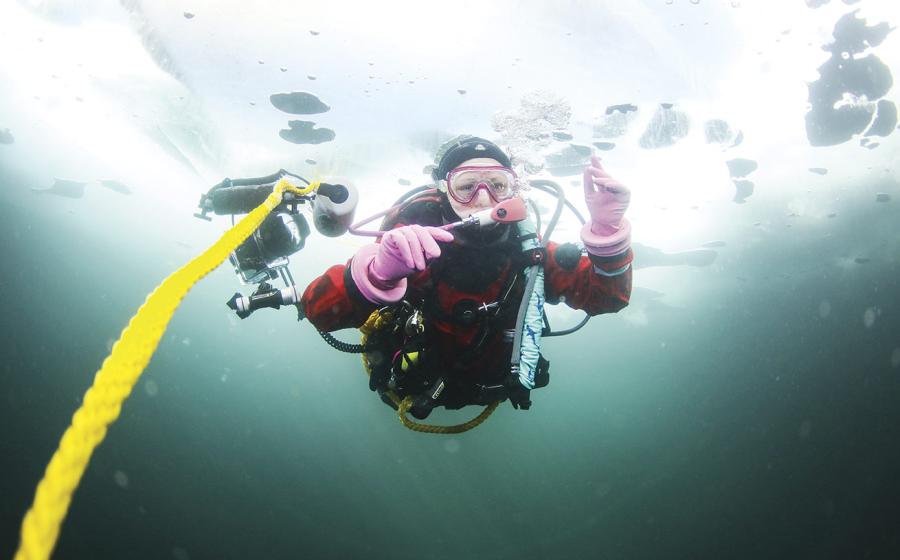Basic Parts of a Drysuit

Bruce MorserDrysuit
Seals Neoprene seals are either smooth-skin-in, with the smooth-skin lying directly against your skin, or smooth-skin-out, which needs to be folded under. Latex seals are either cone-shaped, which allow for trimming to fine-tune fit, or bell-shaped, which provide more surface sealing area.
Zipper Rear-entry drysuit zippers run horizontally along the shoulders, and require the help of a buddy to zip up. Front-entry suits have zippers running either diagonally across the chest or horizontally across the chest or waist.
Materials
Bilaminate or trilaminate drysuits are lightweight, have no inherent buoyancy, and don’t compress at depth. They dry quickly and fold compactly for transport; their only job is to keep water out. Fabric suits rely on undergarments to provide the thermal protection.
Neoprene drysuits are able to stretch so they can fit snugly while still offering good range of motion. They also provide their own thermal properties, so the undergarment doesn’t have to be as thick or heavy as what’s required with fabric suits.
Valves The vast majority of modern drysuits — both neoprene and shell — use a dual-valve system: one inflate valve positioned on the chest for pumping air into the suit, and one exhaust valve, usually located on the upper left arm, for venting air out of the suit.










